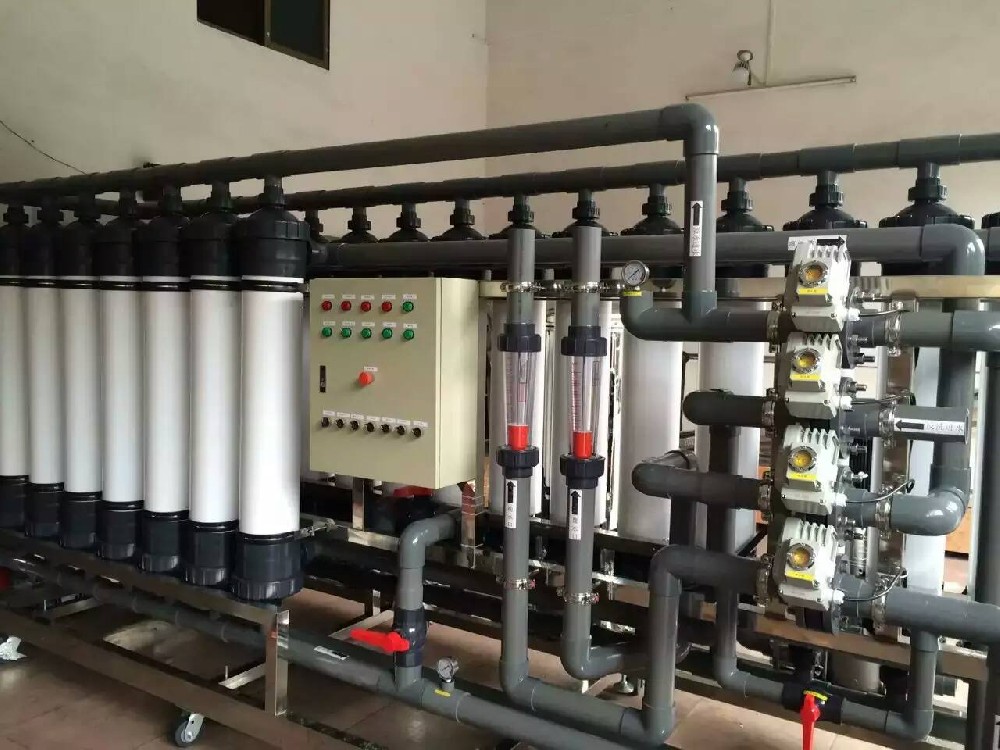
Wechat/Whatsapp:
+8613798883773

Wechat/Whatsapp:
+8613798883773
HYWATER Water filtration system


Notes about UF Water Treatment Plant 1) Membrane filtration method: It means that substances larger than the pore size of the membrane are trapped on the surface of the membrane, and only substances smaller than the pore size of the membrane can pass through the membrane, and there is a method for clear separation boundaries. UF (Ultrafiltration) Water Treatment Plant can basically remove impurities with a molecular mass above 5000-100000. Converted into particle size, it is equivalent to substances above 0.005-0.01um, which can basically be completely removed. 2) Ultrafiltration membrane: It is a membrane used for ultrafiltration, also called UF membrane. Ultrafiltration membrane materials are divided into the following categories: Fiber-based (cellulose acetate, etc.) of organic membranes and synthetic resins (polysulfone, polyethylene, polypropylene, polyacrylonitrile, polyvinylidene fluoride, etc.), and ceramic-based (alumina, zirconia, etc.) of inorganic membranes. 3) Membrane Filtration Flux:Membrane filtration water volume per unit time and unit membrane area. Usually the unit is L/(m2·h) or m3/(m2·d). 4) Membrane flux varies depending on the type of membrane, membrane pressure difference, water temperature, water quality of membrane feed water, membrane fouling state, etc., and is an important indicator of membrane performance. 5) Pure water permeation flux:An index indicating the water permeability of the membrane. The amount of pure water permeating per unit area per unit time is converted to the permeation pure water per unit membrane pressure difference under standard temperature conditions. 6) Dead end filtering: It is a method of filtering all the raw water supplied to the membrane, which is the same method as conventional sand filtration. It also needs to be flushed regularly like sand filters. 7) Cross-flow filtering: One of the operating methods of membrane filtration device. The membrane feed water flows along the membrane surface, and the membrane permeate and feed water flow in a vertical direction, also known as the cross flow filtration method. 8) Operating pressure: Refers to the pressure exerted on the inlet side of the membrane. The pressure of the membrane supply water in the dead-end filtration method is equivalent to this, and in the case of the cross-flow filtration method, it is expressed by the average operating pressure. 9) Transmembrane pressure difference: Refers to the pressure difference between the inlet side and the permeate side of the membrane. In the case of dead-end filtration, it is expressed by the difference between the operating pressure (the pressure of the membrane supply water) and the pressure of the membrane filtered water. 10) Constant flow filtering: Maintain a certain flow of filtering. During continuous filtration, the membrane filtration resistance will increase due to the fouling of the membrane surface and other reasons. Correspondingly, it is necessary to increase the pressure on the water inlet side or reduce the pressure on the permeate side to increase the membrane pressure difference. 11) Constant pressure filtration:A filtration method that maintains a certain membrane pressure difference. In this method, with the fouling of the membrane surface, the flow rate of membrane filtration will decrease. 12) Membrane fouling:It refers to the phenomenon that the solute in the water supplied by the membrane is blocked by the membrane pores formed by the retention of the membrane and the adhesion layer is formed on the surface. 13) Physical cleaning: The cleaning of the membrane by physical methods without the use of chemicals is called physical cleaning. There are backwash, air scrubbing, membrane surface flushing, etc. 14) Rinse: It is a method of pressing clean water from the inlet side of the membrane to make the pollutants flow out along the membrane surface. It is a physical cleaning method of the membrane. 15) Backwash: It is a method of pushing water from the produced water side of the membrane to the water inlet side with pressure to remove the pollutants attached to the membrane surface. It is a kind of physical cleaning. Membrane filtered water is usually used as rinse water. 16) Chemical cleaning: When only physical cleaning cannot restore the membrane filtration performance, chemical agents can be used to clean the membrane, which is called chemical cleaning. It is necessary to use each agent in consideration of the type and number of adherents, the drug resistance of the membrane, and the like. The chemicals used include acids, alkalis, oxidants, detergents, etc., which can be used alone or in combination. 17) Recovery rate: It refers to the ratio of the membrane filtration water volume to the membrane water supply volume, and is an indicator of the treatment efficiency in the membrane filtration method. More inquiries related to UF Water Treatment Plant please contact: Mob& Wechat& WhatsApp: (+86)13544774483 Email: sales010@water-sy.com We will provide high-quality, all-round comprehensive professional services for project consulting, system design, manufacturing, installation and commissioning, personnel training, etc
